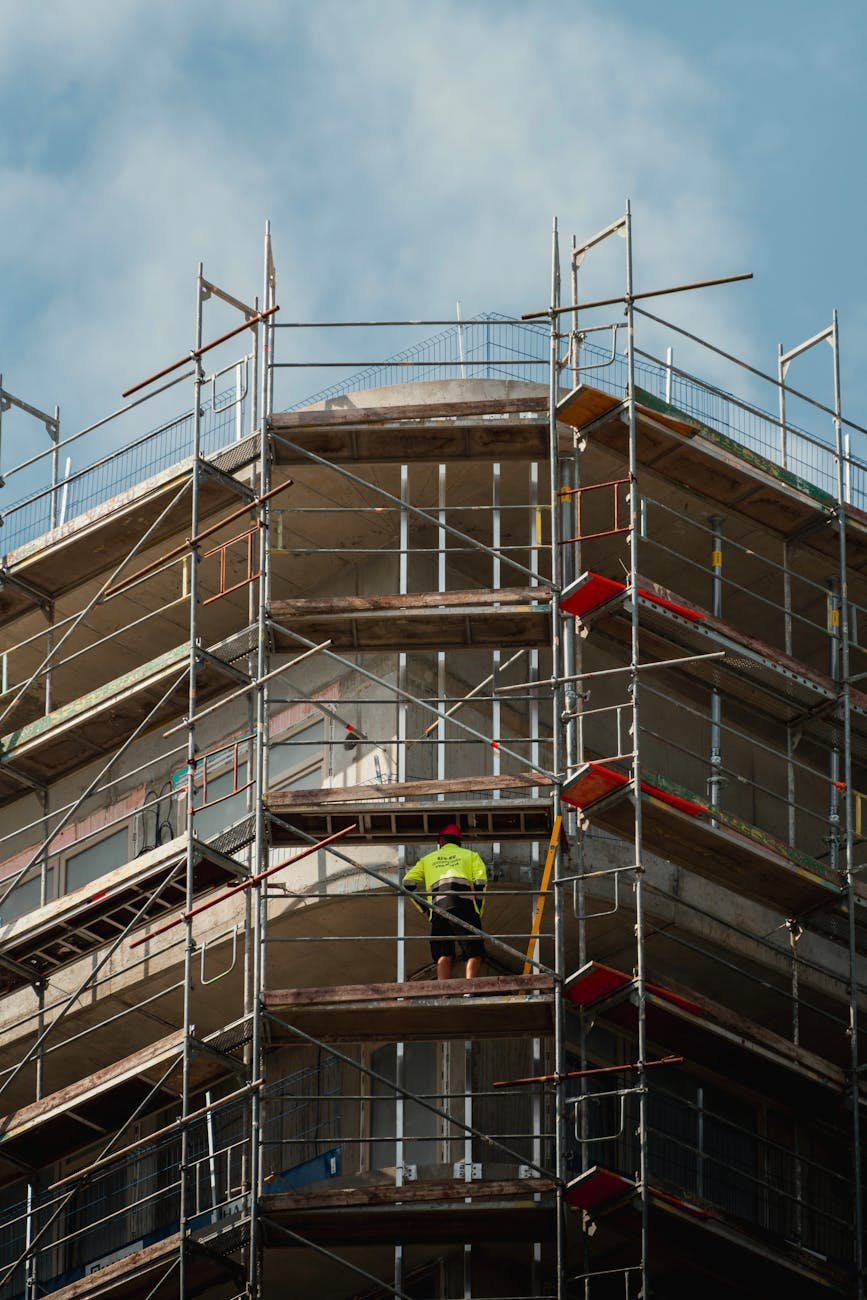
Scaffolding Safety TBT
Good morning team,
Today’s talk is about Scaffolding Safety — one of the most important topics for any construction or maintenance site.
Scaffolds are a daily sight here, and because they’re so common, it’s easy to forget how dangerous they can be if not erected, inspected, and used correctly. Falls from scaffolds remain one of the top causes of serious injury and death in construction.
And remember — the danger isn’t just to people working on the scaffold. If tools or materials fall, anyone below can be injured or killed.
So today, we’ll cover:
- Why scaffolding safety matters
- The main hazards
- Safe erection and inspection requirements
- How to use scaffolds safely
- Do’s and don’ts
- Real-life examples
- Closing safety message
1. Why Scaffolding Safety Matters
- Falls from scaffolds account for thousands of injuries globally every year.
- Many of these incidents happen because of missing guardrails, faulty planks, or unsafe climbing practices.
- A fall from just 2 meters can cause serious injury or death.
- Even well-built scaffolds can become dangerous if misused.
2. Hazards of Working on Scaffolds
2.1 Falls from Height
- Missing guardrails or toe boards.
- Working too close to the edge.
- Overreaching beyond the guardrail.
2.2 Scaffold Collapse
- Poor erection by untrained workers.
- Overloading with materials or people.
- Damaged or missing structural components.
2.3 Falling Objects
- Tools, bolts, or debris falling onto people below.
- Unsecured materials being blown off in the wind.
2.4 Electrocution
- Working too close to live power lines.
2.5 Slips and Trips
- Wet or oily planks.
- Materials blocking walkways.
3. Scaffold Erection and Inspection
- Only trained and competent personnel may erect, alter, or dismantle scaffolds.
- Scaffolds must be built to manufacturer specifications or engineering design.
- A pre-use inspection must be carried out by a competent person:
- Before first use.
- After any alteration.
- After exposure to bad weather.
- At least every 7 days.
- A visible inspection tag should be attached, showing the date and status.
4. Safe Use of Scaffolds
- Always use proper access points — stairs, ladders, or built-in access.
- Keep three points of contact when climbing.
- Don’t climb on cross braces or guardrails.
- Keep walkways clear of tools and materials.
- Do not exceed the load rating — consider both people and materials.
- Wear fall protection if working outside the guardrails or on incomplete scaffolds.
- Use toe boards or netting to prevent objects from falling.
5. Working Near Power Lines
- Maintain minimum clearance distances from live electrical wires (as per local regulations).
- If in doubt, arrange for power to be switched off or rerouted.
6. Do’s and Don’ts
✅ Do:
- Inspect scaffolds before every shift.
- Use scaffolds only for their intended purpose.
- Secure all tools and materials to prevent falls.
- Wear appropriate PPE.
❌ Don’t:
- Move or alter scaffolds without authorization.
- Overload platforms with excess weight.
- Remove guardrails or toe boards.
- Work in high winds without assessing risk.
7. PPE for Scaffold Work
- Hard hat with chin strap.
- Non-slip safety boots.
- Gloves with good grip.
- High-visibility clothing.
- Harness and lanyard where required.
8. Safe Scaffold Loading
- Respect the scaffold’s load rating.
- Distribute materials evenly.
- Avoid stacking heavy items in one spot.
9. Real-Life Case Study
In 2022, two workers were injured when a scaffold collapsed on a building renovation project. Investigation found:
- Scaffold was erected by untrained workers.
- No inspection was carried out before use.
- It was overloaded with bricks and equipment.
Lesson: Scaffolds must be erected, inspected, and used only by competent persons. Overloading and lack of inspection are deadly mistakes.
10. Worker Engagement – Q&A
- Who is allowed to erect or dismantle scaffolds?
- How often must scaffolds be inspected?
- What is the purpose of toe boards?
11. Closing Words – Bringing It Back to the Start
Alright team, scaffolds are a fantastic tool — they allow us to work at height safely and efficiently. But they’re only safe if we respect the rules:
- Built and inspected by competent people.
- Used the right way, with the right PPE.
- Never altered or overloaded.
If you see a scaffold that looks unsafe, don’t use it and report it immediately. Your actions could save a life.
Let’s keep in mind — it only takes one shortcut, one missing guardrail, or one overloaded platform to turn a normal workday into a tragedy.
So let’s do it right, every time.
Stay alert, stay safe, and let’s have a productive day.
Reporting Near Misses 5 Minute Safety Talk
Heat Stress and Hydration 5 Minute Safety Talk
Confined Space Entry 5 Minute Safety Talk